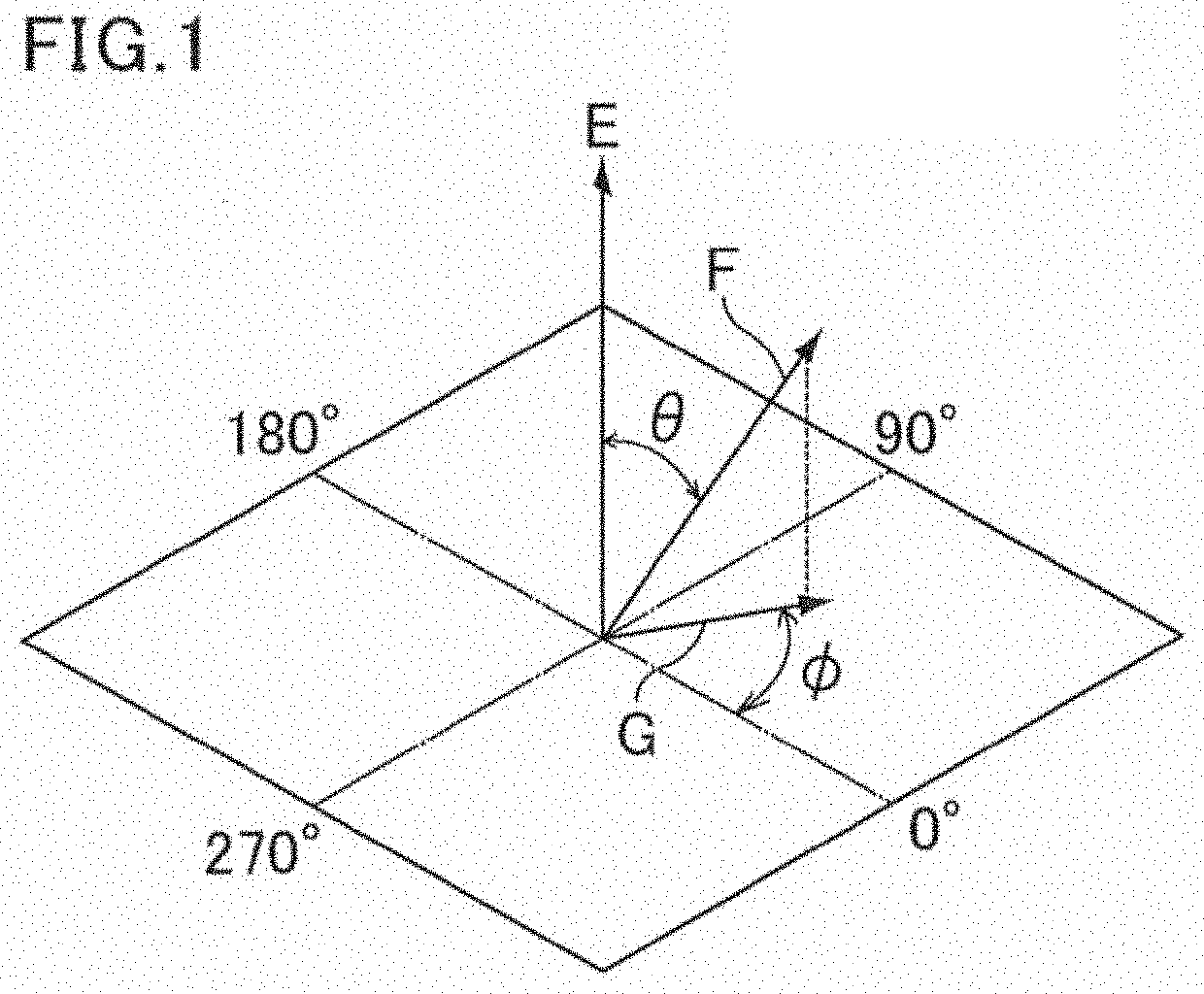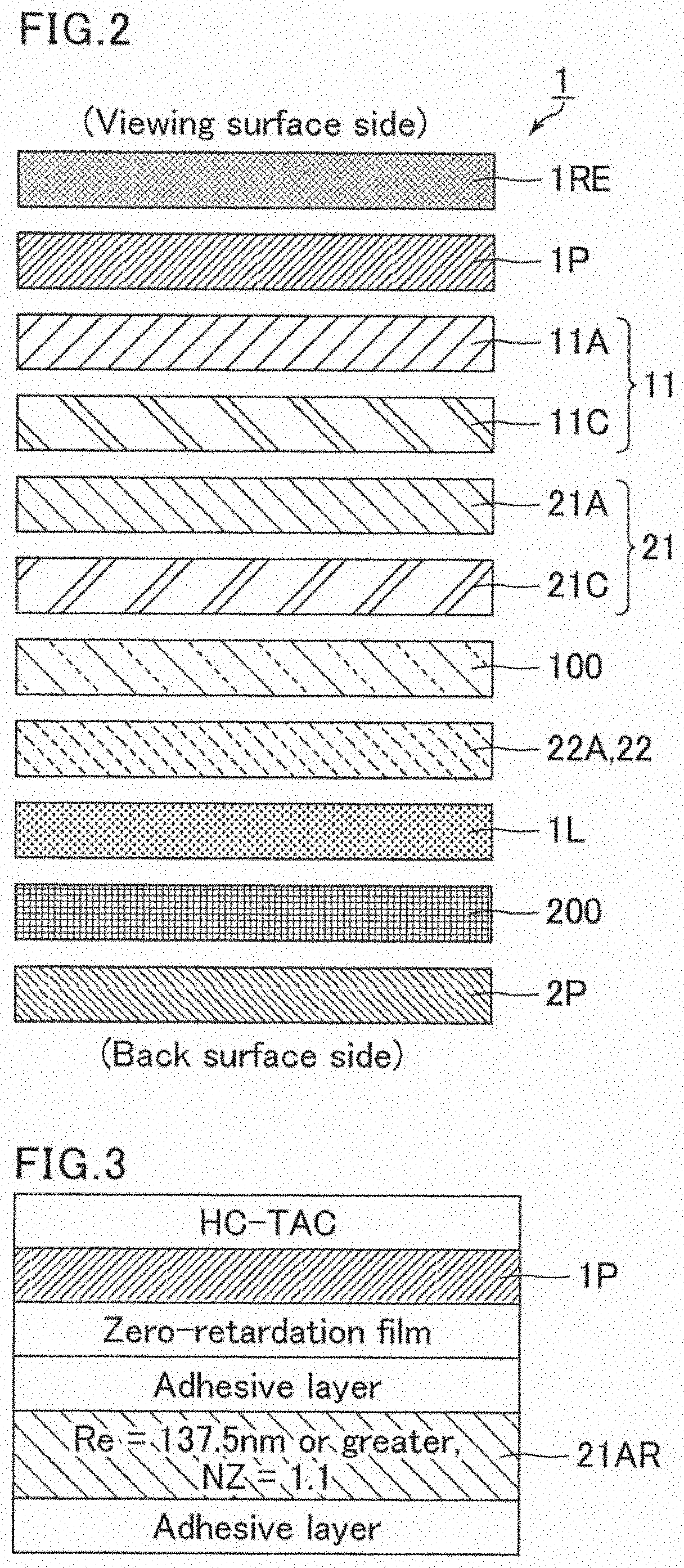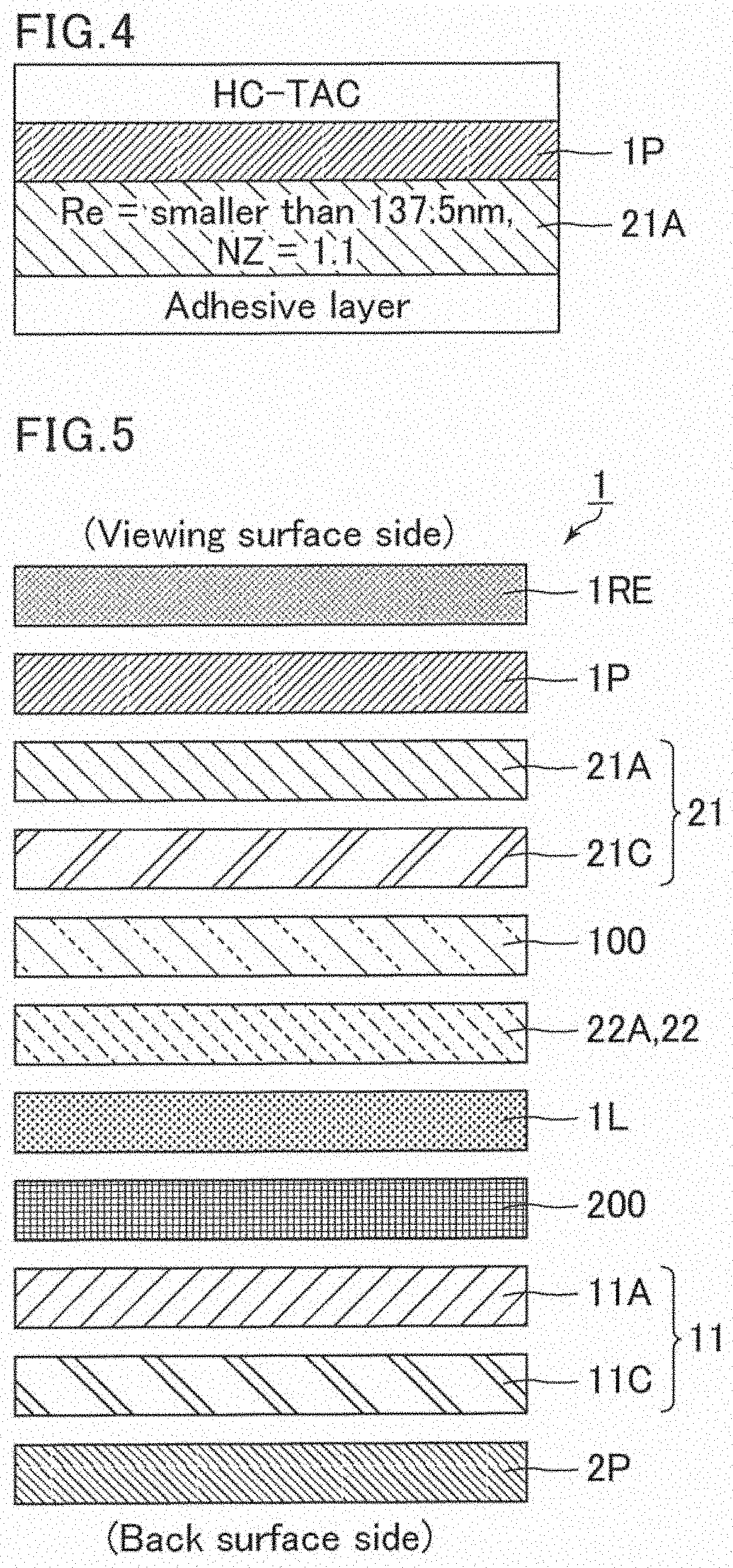Liquid crystal display device
a liquid crystal display and display device technology, applied in the field of liquid crystal display devices, can solve the problems of poor display image recognition, achieve the effects of reducing light leakage, reducing reflection of external light, and being easy to produ
- Summary
- Abstract
- Description
- Claims
- Application Information
AI Technical Summary
Benefits of technology
Problems solved by technology
Method used
Image
Examples
embodiment 1
[0071]FIG. 2 is a schematic cross-sectional view of a liquid crystal display device of Embodiment 1. A liquid crystal display device 1 of the present embodiment includes, in the following order from the viewing surface side, a blue antireflection film 1RE as the antireflection film, the first polarizer 1P, the viewing angle compensation layer 11, the out-cell retardation layer 21, the first substrate 100, the in-cell retardation layer 22, the horizontally aligned liquid crystal layer 1L, the second substrate 200, and the second polarizer 2P. The viewing angle compensation layer 11 is a laminate including: the positive A plate 11A as the retardation layer, having an NZ coefficient of 0.7 or greater and 1.3 or smaller and an in-plane retardation of 130 nm or greater and 150 nm or smaller; and the positive C plate 11C as the retardation layer, having an in-plane retardation of 0 nm or greater and 10 nm or smaller and a thickness retardation of 80 nm or greater and 100 nm or smaller, in...
modified example 1 of embodiment 1
[0117]The viewing angle compensation layer 11 of Embodiment 1 may be a laminate (hereinafter, also referred to as a second laminate) including: a first biaxial retardation layer having an NZ coefficient of 1.3 or greater and 1.5 or smaller and an in-plane retardation of 80 nm or greater and 100 nm or smaller; and a second biaxial retardation layer having an NZ coefficient of −1.2 or greater and −0.8 or smaller and an in-plane retardation of 50 nm or greater and 70 nm or smaller, in the stated order from the first polarizer 1P side. The viewing angle compensation layer 11 including the second laminate having a different layer structure from the first laminate is optically equal as a whole to the viewing angle compensation layer 11 including the first laminate.
[0118]The first biaxial retardation layer may be formed by simultaneous biaxial stretching or sequential biaxial stretching a material with a positive birefringence, for example. Specific examples of the material with a positive...
modified example 2 of embodiment 1
[0123]The viewing angle compensation layer 11 of Embodiment 1 may be a laminate (hereinafter, also referred to as a third laminate) including: a third biaxial retardation layer having an NZ coefficient of 1.1 or greater and 1.3 or smaller and an in-plane retardation of 100 nm or greater and 130 nm or smaller; and a fourth biaxial retardation layer having an NZ coefficient of −4.5 or greater and −3.5 or smaller and an in-plane retardation of 10 nm or greater and 30 nm or smaller, in the stated order from the first polarizer 1P side. The viewing angle compensation layer 11 including the third laminate having a different layer structure from the first laminate is optically equal as a whole to the viewing angle compensation layer 11 including the first laminate.
[0124]The third biaxial retardation layer may be formed by the same method as for the first biaxial retardation layer. The fourth biaxial retardation layer may be formed by the same method as for the second biaxial retardation la...
PUM
| Property | Measurement | Unit |
|---|---|---|
| thickness retardation | aaaaa | aaaaa |
| thickness retardation | aaaaa | aaaaa |
| thickness retardation | aaaaa | aaaaa |
Abstract
Description
Claims
Application Information
 Login to View More
Login to View More - R&D
- Intellectual Property
- Life Sciences
- Materials
- Tech Scout
- Unparalleled Data Quality
- Higher Quality Content
- 60% Fewer Hallucinations
Browse by: Latest US Patents, China's latest patents, Technical Efficacy Thesaurus, Application Domain, Technology Topic, Popular Technical Reports.
© 2025 PatSnap. All rights reserved.Legal|Privacy policy|Modern Slavery Act Transparency Statement|Sitemap|About US| Contact US: help@patsnap.com



